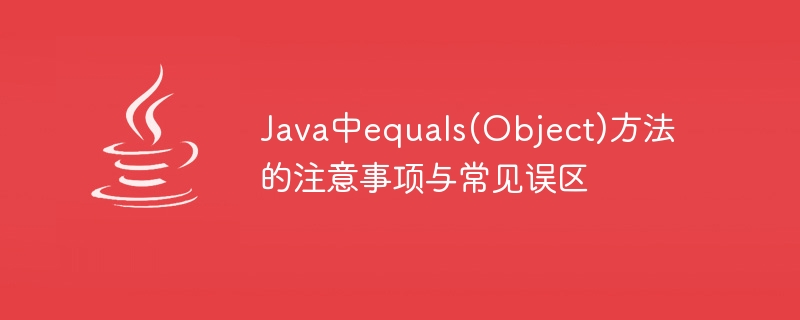

The equals method in Java is a method used to compare whether objects are equal. It is a method of the Object class and is very commonly used in actual development. However, due to insufficient understanding of the equals method and its implementation, many developers will make some common misunderstandings when using the equals method. This article will introduce the precautions and common misunderstandings about the equals method in Java to help readers better understand and use the equals method.
First, let us understand the basic usage of the equals method. In Java, all classes inherit from the Object class, and the equals method in the Object class is defined as follows:
public boolean equals(Object obj) {
return (this == obj);
}As you can see, the default implementation of the equals method in the Object class is to compare whether the references of the objects are the same. That is, determine whether two objects are the same object. But in actual development, we usually need to judge whether they are equal based on the contents of the object, so we need to override the equals method in the custom class. The following is an example of overriding the equals method:
public class Person {
private String name;
private int age;
// 省略构造方法和其他代码
@Override
public boolean equals(Object obj) {
if (this == obj) {
return true;
}
if (obj == null || getClass() != obj.getClass()) {
return false;
}
Person person = (Person) obj;
return age == person.age && Objects.equals(name, person.name);
}
}In this example, we override the equals method of the Person class to determine whether two Person objects are equal based on name and age.
Next, we will introduce some precautions and common misunderstandings about the equals method that need to be paid attention to in actual development.
When rewriting the equals method, you need to ensure that the above conditions are met to ensure the correctness of the equals method.
To summarize, the equals method in Java is a method used to compare whether objects are equal, and is very commonly used in actual development. However, when using the equals method, you need to pay attention to the specifications and precautions for rewriting the equals method to avoid common misunderstandings. Correctly rewriting the equals method can improve the maintainability and robustness of the program, so I hope this article can help readers better understand and use the equals method.
The above is the detailed content of Common misunderstandings and precautions: equals(Object) method in Java. For more information, please follow other related articles on the PHP Chinese website!




